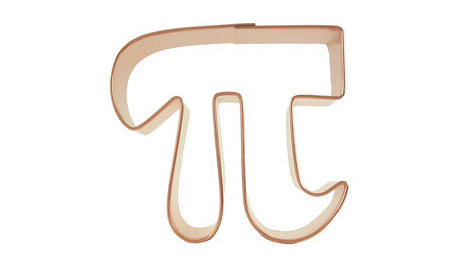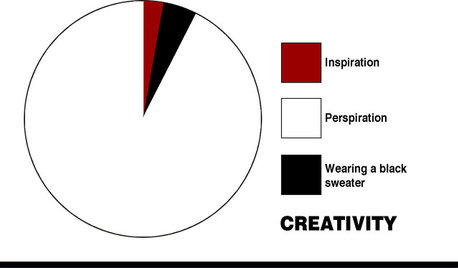Freeze or can apples for apple pie filling
Peter (6b SE NY)
8 years ago
Featured Answer
Sort by:Oldest
Comments (18)
digdirt2
8 years agoPeter (6b SE NY)
8 years agolast modified: 8 years agoRelated Discussions
can I safely add raisins to apple pie filling?
Comments (2)Thanks! I was pretty sure that was the case, but I wanted confirmation from a trusted source. My pears are an old homestead variety, Pineapple Pear. They ripen in late June, early July....See MoreFreezing Apple Pie Filling
Comments (2)If you are going to freeze it you can use any recipe you want with the proviso that the apples will be more mushy and if you use cornstarch it will separate and some spices may overly intensify. Honestly there is little to be gained in my opinion in freezing it as pie filling. Tried it both ways over the years and much prefer to just freeze the apples normally (I use sugar pack) and then add the rest of the ingredients at pie prep time. That lets you drain the apples a bit before use and avoid the other potential problems. JMO Dave Here is a link that might be useful: Freezing Apples NCHFP...See MoreCanning Apple Pie Filling
Comments (2)You can cut down on the sugar, just not the added acid in the pie filling. I am assuming you will use Clear Jel since that is the only safe thickener to use in pie fillings. Normally I thin it down with more apple juice or just don't use as much Clear Jel to start with. It seems to be too thick, I find, if using the entire amount of Clear Jel....See MoreCanned Apple Pie Filling Recipe
Comments (1)There's nothing wrong with the one in the 2009 edition of the BBB but it is safe only for freezing because of the flour, which should not be canned. If you want one that you can preserve in a boiling water bath, there's an approved recipe on the National Center for Home Food Preservation website, but it does require Clear-Jel as a thickener, since flour cannot be used, and Clear-Jel is not easy to find. I order mine online because the stores here do not carry it. If, by chance, the apples were a gift from somebody who has a apple tree, be sure you know if they were fresh-picked off the tree, or if they were windfall/downfall. If they were the latter, add extra lemon juice to compensate for that bacteria might have begun growing in them while they were lying on the ground. Don't forget that, if you don't have Clear-jel and don't want to make frozen apple pie filling, there are several other BWB recipes that are safe and approved, including apple pie jelly, apple butter, applesauce, apple cranberry mincemeat, apple pie jam, apple rings, or pear apple ginger marmalade, etc. Recently I've made several batches of Linda Lou's Apple Pie Jam from the recipe on the Havest Forum and it is delicious. Be careful with any old recipes that use flour or cornstarch as a thickener. I don't think that any of them are considered safe for BWB canning under the current guidelines, but they can be frozen. Dawn Here is a link that might be useful: NHCFP Apple Pie Filling Recipe for BWB Canning...See Moredigdirt2
8 years agoannie1992
8 years agoPeter (6b SE NY)
8 years agodigdirt2
8 years agoannie1992
8 years agoPeter (6b SE NY)
8 years agolast modified: 8 years agodigdirt2
8 years agoPeter (6b SE NY)
8 years agolast modified: 8 years agoannie1992
8 years agodigdirt2
8 years agodigdirt2
8 years agoPeter (6b SE NY)
8 years agolast modified: 8 years agodigdirt2
8 years agoPeter (6b SE NY)
8 years agolast modified: 8 years agoannie1992
8 years ago
Related Stories

EDIBLE GARDENSHow to Add an Apple Tree to Your Edible Garden
Readily available, beautiful and fragrant, apple trees offer four-season interest along with crisp, juicy fruit
Full Story
GREEN BUILDINGThe Big Freeze: Inventors Break New Ground to Keep Things Cool
Old-fashioned fridges can be energy guzzlers, but there are more eco-friendly ways of keeping food fresh, as these global innovations show
Full Story
DECORATING GUIDESCrisp, Fresh: Go for Green Apples
On the Walls or Au Natural, Green Apples Pack a Decorative Bite
Full Story
GARDENING AND LANDSCAPINGCrab Apple Trees Set Off a Stylish English Courtyard
A structure of pleached crab apple trees, bordered by a wildflower meadow, links a minimalist addition to an old house in Buckinghamshire
Full Story
PRODUCT PICKSGuest Picks: Pi Day + Pie Stuff = Yummy Fun
Add these tools and accessories to your baking arsenal and watch smiles multiply
Full Story
KITCHEN DESIGN16 Scrumptious Eat-In Kitchens and What They Want You to Serve
Whether apple-pie cheerful or champagne sophisticated, these eat-in kitchens offer ideas to salivate over
Full Story
COFFEE WITH AN ARCHITECTDesign Explained in Pie Charts
If you've ever wondered about the creative process of architects and designers, check out these simple charts
Full Story
FALL GARDENING5 Fall Fruits You Can Grow in Containers
Brighten your porch or patio with a potted pomegranate, kumquat, blueberry bush or another great fall fruit
Full Story
ACCESSORIESLive Boldly: How to Fill That Blank Wall
Sometimes living boldy in your design means simply filling your walls with something unexpected
Full Story



rgreen48